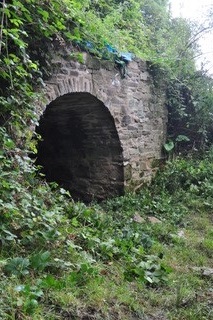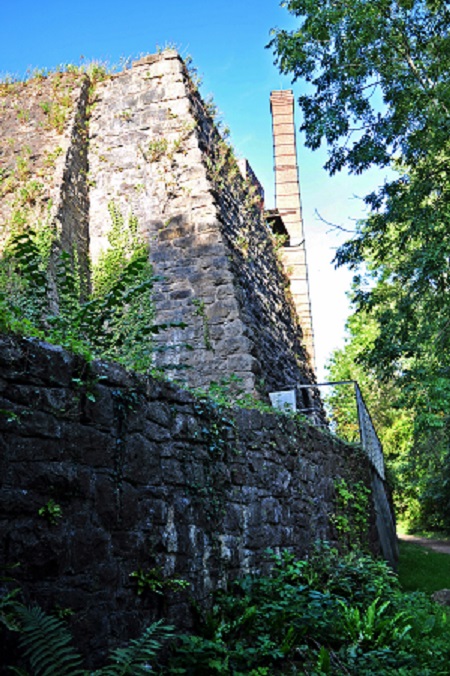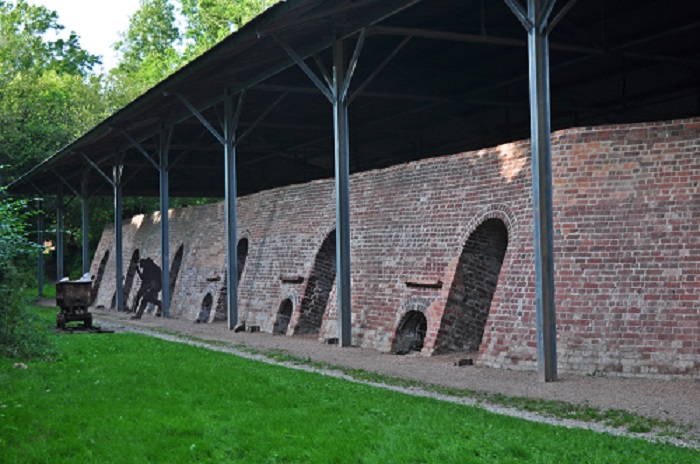Heritage Open Days – September 2019
 The last two weekends of 14/15th and 21/22nd September saw the annual Heritage Open Days taking place across the country. For these days, various historic buildings that are normally private access only are opened to the public, and many sites that are normally open run additional events or talks. Although Shropshire is now seen as a very rural county (and here at Acorn Lodge we specialise in tranquil breaks in the countryside) it should not be forgotten that Shropshire was the cradle of the Industrial Revolution. There is a great deal of industrial archaeology to be explored within quite a short distance of our cabin. One of the walks in our bespoke Walks guide takes guests down across the farm run by our son Mark and his wife Mary-Jane, and takes in the Field Kiln on their land that was used in the 19th Century for making quicklime. They have started to restore this kiln, which is one of the best-preserved in the local area. The quicklime would have had various uses – to improve the soil for crops, to make limewash for painting buildings, to make traditional lime mortar, and so on.
The last two weekends of 14/15th and 21/22nd September saw the annual Heritage Open Days taking place across the country. For these days, various historic buildings that are normally private access only are opened to the public, and many sites that are normally open run additional events or talks. Although Shropshire is now seen as a very rural county (and here at Acorn Lodge we specialise in tranquil breaks in the countryside) it should not be forgotten that Shropshire was the cradle of the Industrial Revolution. There is a great deal of industrial archaeology to be explored within quite a short distance of our cabin. One of the walks in our bespoke Walks guide takes guests down across the farm run by our son Mark and his wife Mary-Jane, and takes in the Field Kiln on their land that was used in the 19th Century for making quicklime. They have started to restore this kiln, which is one of the best-preserved in the local area. The quicklime would have had various uses – to improve the soil for crops, to make limewash for painting buildings, to make traditional lime mortar, and so on.
One of our guests with an interest in archaeology went to look at this kiln, and wanted to learn more around the history of quicklime manufacture. The Heritage Open Days were a great help, as there is a big historical industrial site at Llanymynech in Shropshire (about 50 miles from us by road). This site changed the manufacturing process from the small local operation of the type we had here into a big mechanised industrial operation, and is one of the most intact in Britain. Volunteer guides were giving talks about it for the Heritage weekend.


The “drop kiln” was really just a scaling-up of the little Field Kilns to be seen around Hope Bagot, but where those would have made one batch at a time for local needs, the Llanymynech kiln made 10 tons A DAY! It was a continuous process, with more limestone being dropped in from the top and the quicklime taken out of the bottom. Our kiln here in Hope Bagot probably didn’t make 10 tons in its whole working life.
Even this massive output was not enough to satisfy the demand for quicklime, and an even more automated and bigger kiln was built at Llanymynech – the Hoffman Kiln. The black silhouette figures of workers show how big this was.
The good news for any other guests who are interested in industrial archaeology is that, although the Heritage Open Days are finished for this year, access to the sites is always available. Our bespoke Walks Guidebook has seven walks starting from Acorn Lodge, including the walk that takes in the Field Kiln. All of the other walks take in at least one feature of historic interest. Llanymynech Limeworks and its associated country park/canal walks is open all year round, just off the A483.


